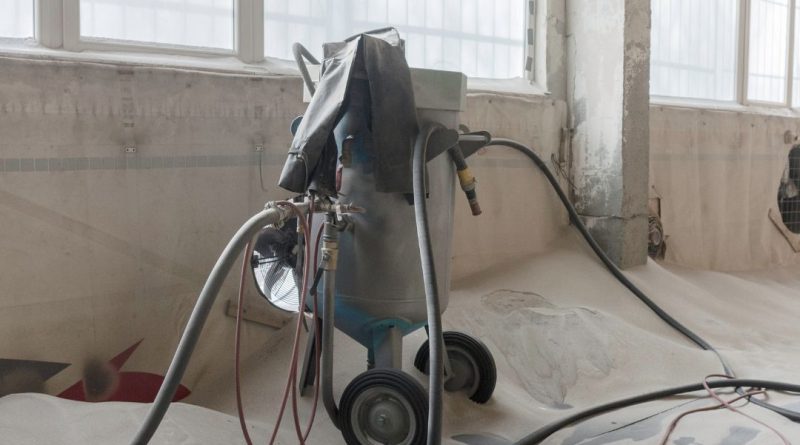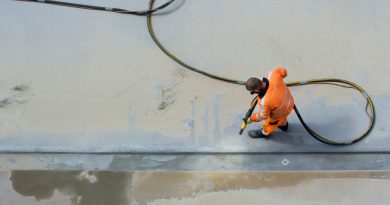Maintenance Tips for Your Blaster Pot Equipment
Maintaining your blaster pot equipment, also known as a sandblaster pressure pot, is crucial for ensuring optimal performance and longevity. Proper upkeep and care of a sandblaster pressure pot is an investment that pays dividends in efficiency and safety. This guide provides essential maintenance tips to keep your sandblaster pressure pot in excellent condition, ensuring smooth operation and high efficiency.
Understanding Your Blaster Pot: Key Components and Functions
What Is a Blaster Pot?
A blaster pot often called a sandblaster pressure pot, stores and pressurizes abrasive media for blasting processes. It expels the media at high speeds for surface preparation, cleaning, or finishing. Understanding its key components helps in effective maintenance.
Key Components of a Sandblaster Pressure Pot
| Component | Description |
| Pressure Vessel | The main body designed to withstand high pressure. Regularly inspect for cracks or corrosion. |
| Media Feed System | Controls the flow of abrasive materials. Ensure it is free of blockages to prevent inefficiency. |
| Control Valve | Manages the release of air and media. Check its function for consistent performance. |
| Nozzle | Directs abrasive material. Inspect for wear or damage, as a worn nozzle affects efficiency. |
Functions of a Blaster Pot
The primary function of a blaster pot is to deliver abrasive media at high velocity. It operates under pressure, effectively propelling the material. Knowing these functions helps you quickly identify maintenance needs.
Routine Maintenance for Optimal Performance of a Sand Blaster Pressure Pot
Regular maintenance of your sand blaster pressure pot is essential for peak performance. Below are routine tasks that should be part of your maintenance checklist:
Daily Maintenance
Inspect for Leaks: Check for air or media leaks around connections and seals before use. Address leaks promptly to prevent pressure loss.
Clean the Nozzle: After use, clean the nozzle thoroughly to avoid clogs. A clean nozzle improves efficiency and reduces wear.
Weekly Maintenance
Check Pressure Levels: Monitor the pressure gauge to ensure it is within the recommended range. Low pressure can lead to ineffective blasting.
Inspect Hoses and Connections: Look for signs of wear or damage. Replace any frayed parts to avoid leaks.
Monthly Maintenance
Lubricate Moving Parts: Apply lubricant to moving parts like the control valve for smooth operation. Refer to the manufacturer’s guidelines for the appropriate lubricant.
Replace Air Filters: If equipped, replace air filters monthly for clean air during blasting.
Inspecting Seals and Gaskets: When to Replace Them
Importance of Seals and Gaskets
Seals and gaskets prevent leaks and maintain consistent pressure. Regular inspection is essential to avoid costly repairs and downtime.
Signs of Wear and Tear
Visual Inspection: Look for cracks, tears, or deformations. If you find any issues, replace the seals or gaskets.
Pressure Fluctuations: Inconsistent pressure may indicate failing seals or gaskets.
Replacement Tips
Refer to Manufacturer Specifications: Use replacement parts that meet the manufacturer’s specifications to ensure compatibility.
Regular Schedule: Inspect and replace seals and gaskets every six months or after a certain number of blasting hours.
Cleaning Your Blaster Pot: Best Practices for Longevity
Importance of Cleaning
Regular cleaning prevents abrasive buildup, leading to inefficient operation and potential damage.
Cleaning Process
Empty the Pot: Remove any remaining abrasive media and dispose of it according to local regulations.
Internal Cleaning: Use a vacuum or compressed air to eliminate residual media. For stubborn debris, use a soft brush.
Exterior Cleaning: Wipe down the exterior with a damp cloth to remove dust and grime. This helps prevent rust.
Inspect Interior Surfaces: While cleaning, check for wear or damage. Address any issues immediately to prevent complications.
Best Practices
Use the Right Cleaning Agents: Avoid harsh chemicals. Stick to mild detergents and water.
Follow a Cleaning Schedule: Establish a cleaning routine based on usage frequency. For heavy use, clean after every few sessions.
Troubleshooting Common Issues with Blaster Pots
Identifying Common Problems
Even with regular maintenance, issues can arise. Here are common problems and how to troubleshoot them:
| Problem | Causes | Solutions |
| Low Pressure | Leaks, clogged hoses, insufficient air | Inspect connections for leaks, check hoses and nozzle for blockages, ensure compressor is functioning well. |
| Uneven Abrasive Flow | Clogged media feed system, malfunctioning control valve | Clean media feed and inspect the control valve for proper operation. |
| Excessive Wear on Nozzle | Incorrect abrasive media, high pressure | Use recommended abrasive materials and monitor pressure settings to prevent overuse. |
Storing Your Blaster Pot:
| Common Problem | Possible Causes | Recommended Actions |
| Low Pressure | Leaks, clogged hoses, insufficient air | Inspect for leaks, clean hoses and nozzle, check compressor output. |
| Uneven Abrasive Flow | Clogged media feed system, faulty control valve | Clean media feed, check control valve functionality. |
| Excessive Wear on Nozzle | Incorrect abrasive media, high pressure | Use manufacturer-recommended abrasives, monitor pressure levels. |
| Moisture Buildup | Improper storage, lack of cleaning | Store in a dry place, clean thoroughly before storage. |
| Equipment Corrosion | Exposure to moisture and harsh environments | Use protective coatings and store in a controlled environment. |
Seasonal Tips You Need to Know
Importance of Proper Storage
Proper storage maintains your sandblaster pressure pot condition and functionality. Seasonal changes can affect equipment integrity, so follow best practices.
Seasonal Storage Tips
Empty the Pot: Ensure the pot is completely emptied to prevent moisture buildup and corrosion.
Clean Thoroughly: Follow cleaning procedures to remove any media residue.
Store in a Dry Environment: Keep your blaster pot in a dry area to avoid rust. Avoid damp locations.
Protect from Extreme Temperatures: Store indoors during extreme weather to prevent damage.
Preparing for Seasonal Use
Inspect Before Use: Conduct a thorough inspection after storage to identify any issues.
Test Run: Do a test run with air only to ensure it operates correctly before starting your project.
Safety Checks for Maintaining a Reliable Blaster Pot Setup
Importance of Safety
Safety is a priority when operating a blaster pot. Regular safety checks prevent accidents and ensure a reliable setup. Neglecting safety protocols can lead to serious injuries or equipment failure.
Safety Checklist
Wear Appropriate Personal Protective Equipment (PPE): Always wear gloves, goggles, and respiratory protection to shield against debris and harmful particles.
Inspect Safety Valves: Regularly check safety valves to ensure they function correctly, preventing over-pressurization.
Check Pressure Relief Systems: Ensure pressure relief systems are unobstructed and operate correctly.
Review Operating Procedures: Familiarize yourself with safe operating procedures and emergency protocols.
Training and Awareness
Conduct Regular Training: Train all operators on safe use and the importance of maintenance checks.
Maintain an Open Dialogue: Encourage operators to report safety concerns or equipment issues promptly.
When to Seek Professional Help with Equipment Maintenance
Recognizing the Need for Professional Assistance
Some situations may require professional help. Knowing when to seek assistance can save time and money.
Signs You Need Professional Help
Persistent Issues: If problems recur despite maintenance, consult a professional technician.
Complex Repairs: For major component repairs or replacements, seek professional help to ensure correct work.
Lack of Knowledge: If unsure about how to perform maintenance tasks, consult an expert to avoid damaging the equipment.
Finding a Qualified Technician
Research Local Experts: Look for technicians experienced in servicing blaster pots. Check reviews and ask for recommendations.
Manufacturer Support: Many manufacturers offer support or recommend qualified technicians for maintenance and repairs.
Regular maintenance of your blaster pot is essential for optimal performance, safety, and longevity. By understanding your equipment, performing routine tasks, and knowing when to seek professional help, you can keep your sandblaster pressure pot operating smoothly for years. Implement these essential maintenance tips to protect your investment and enhance your blasting operations.
FAQs
Q: How often should I perform maintenance on my blaster pot?
A: Regular upkeep should include daily checks before use, weekly inspections, and monthly maintenance tasks.
Q: What should I do if I notice a leak in my blaster pot?
A: Address leaks immediately by inspecting connections and seals, and replacing any damaged parts to prevent pressure loss.
Q: Can I use any type of abrasive media in my blaster pot?
A: It’s essential to use the recommended abrasive materials specified by the manufacturer to prevent damage and ensure efficiency.
Q: What safety gear should I wear while operating a sandblaster pressure pot?
A: Always wear gloves, goggles, and respiratory protection to protect against debris and harmful particles.

